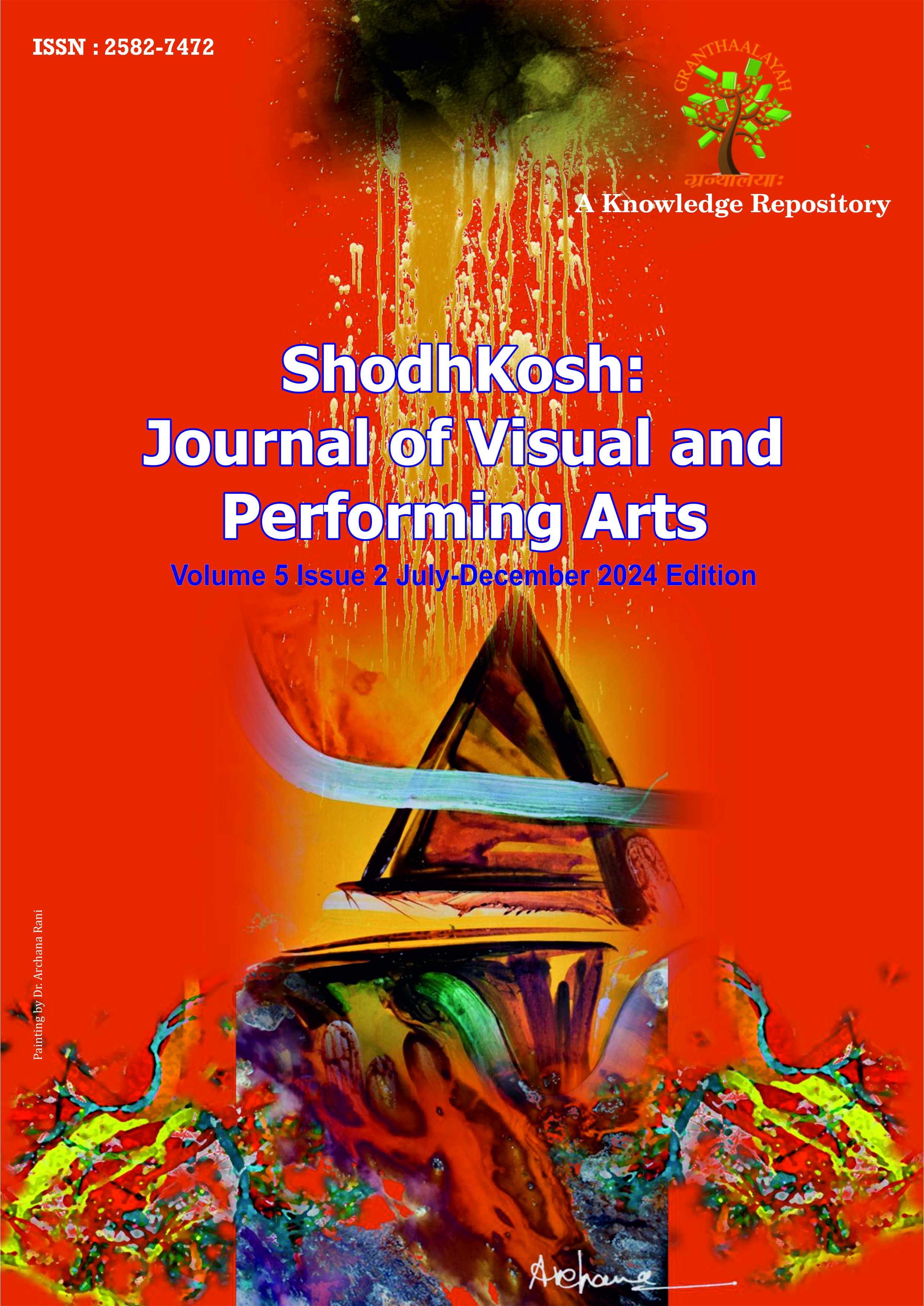EXPLORING THE EVOLUTION AND ARTISTRY OF CALLIGRAPHY: A HISTORICAL ANALYSIS FROM THE 9TH TO 19TH CENTURY IN INDIAN HISTORY
DOI:
https://doi.org/10.29121/shodhkosh.v5.i2.2024.1403Keywords:
Indian calligraphy, Evolution, East, West, And Islamic Calligraphy, Indian EpigraphyAbstract [English]
This study explores the evolution and artistry of Indian calligraphy from the 9th to the 19th century through a thematic analysis of relevant literature. Tracing changes in scripts, styles, and cultural influences, the research delves into the dynamic interplay of artistic techniques and socio-cultural impact shaping Indian calligraphy over time. Drawing insights from diverse sources spanning from ancient Indian calligraphy from 9th to 19th century, the study illuminates the enduring legacy of calligraphy as a cultural artifact and artistic expression in Indian society. Through a nuanced examination of historical trends and cultural nuances, the research highlights the profound significance of Indian calligraphy as a testament to the artistic prowess and spiritual depth of its practitioners. The study concludes by emphasizing the importance of preserving and promoting India's calligraphic heritage for future generations, ensuring its continued appreciation and relevance in the ever-evolving cultural landscape.
References
Choudhary, A. (2020). Books as Objects of Exchange: A Study of Cross-Cultural Interaction and Connected Systems between the Mughals and Ottomans. Madison Historical Review, 17(1), 5.
Daniels, P. T. (2019). Indic Scripts: History, Typology, Study. Handbook of Literacy in Akshara Orthography, 11-42. https://doi.org/10.1007/978-3-030-05977-4_2 DOI: https://doi.org/10.1007/978-3-030-05977-4_2
Gábor, K. (2022). Evolution of Dialect and Script: Case Study of Urdu. Quarterly Journal of the Pakistan Historical Society, 70(4).
Halimi, N. (2021). From Written Word to Art/Calligraphy. PHILOSOPHICA International Journal of Social and Human Sciences, 8(15-16), 78-86.
Javedan, R. (2016). Artistic Features of Calligraphy and its Impact on Indian Art.
Kuiper, K. (2010). The Culture of India. Britannica Educational Publishing.
Shreya, L., & Shahid, M. (2015). Understanding the Development in Indian Calligraphy with Focus on Devanagari.
Sircar, D.C. (2017). Indian Epigraphy. Motilal Banarsidass.
Sohoni, P. (2017). Marathi of a Single Type: The Demise of the Modi Script. Modern Asian Studies, 51(3), 662-685. https://doi.org/10.1017/S0026749X15000542 DOI: https://doi.org/10.1017/S0026749X15000542
Thackston, W. (2000). Album Prefaces and other Documents on the History of Calligraphers and Painters. In Album Prefaces and Other Documents on the History of Calligraphers and Painters. Brill. https://doi.org/10.1163/9789004492301 DOI: https://doi.org/10.1163/9789004492301
Turgut, Ö.P. (2014). Calligraphic forms in Contemporary Typographic Design. Procedia-Social and Behavioral Sciences, 122, 40-45. https://doi.org/10.1016/j.sbspro.2014.01.1300 DOI: https://doi.org/10.1016/j.sbspro.2014.01.1300
Downloads
Published
How to Cite
Issue
Section
License
Copyright (c) 2024 Garima

This work is licensed under a Creative Commons Attribution 4.0 International License.
With the licence CC-BY, authors retain the copyright, allowing anyone to download, reuse, re-print, modify, distribute, and/or copy their contribution. The work must be properly attributed to its author.
It is not necessary to ask for further permission from the author or journal board.
This journal provides immediate open access to its content on the principle that making research freely available to the public supports a greater global exchange of knowledge.




























